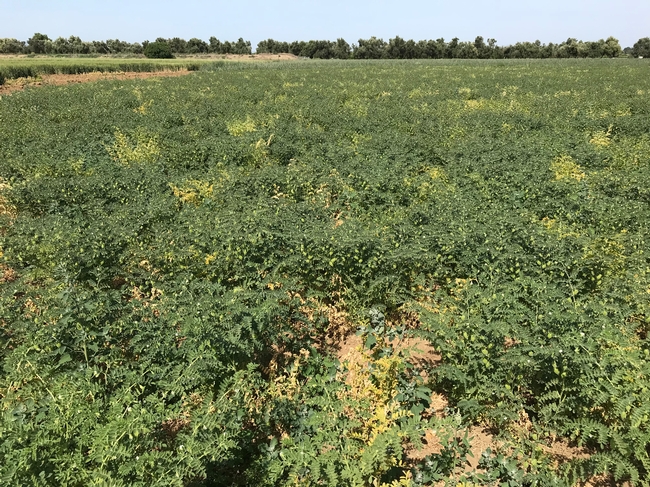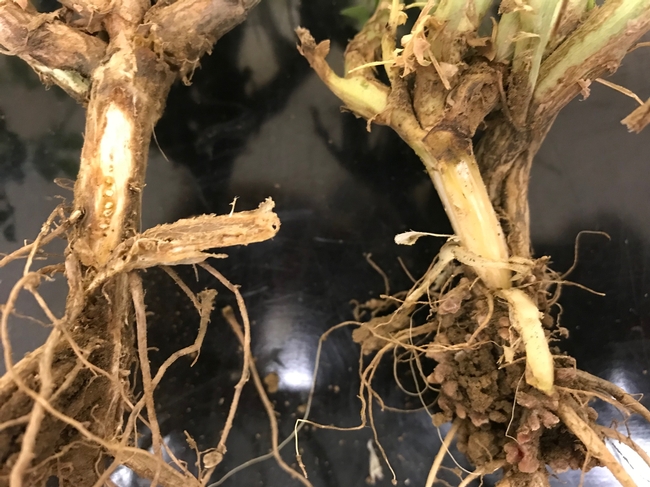Several garbanzo fields in the Sacramento Valley were infected with alfalfa mosaic virus, a disease that's vectored by aphids. Plant symptoms of viral infections include yellowing wilting, stunting, and dieback. The degree of plant loss and yield decline will depend on the timing of the infection (later infections may not be as damaging). A common theme for viral infections in garbanzos is that there is no pattern to the disease incidence in the field. That is, individual plants scattered throughout the field will show dieback. This is because the infection depends on where the aphids land and feed. Aphids do not colonize (reproduce) on garbanzo plants due to the acids secreted by the plants. Instead, they usually die, so there is minimal lateral spread of the disease from the point of infection.

To identify alfalfa mosaic virus and other viral infections in garbanzos, cut a stem longitudinally and observe any discoloration in the vascular tissue (xylem and phloem). If the discoloration (brownish) runs along the edges of the cut stem, then it is likely the phloem (sugar conducting tissue) and caused by an aphid-transmitted virus, which moves down into the plant from the leaves. To manage alfalfa mosaic virus, avoid planting garbanzo fields next to alfalfa fields where they can pick up and transmit the virus (lima beans are also very susceptible). It is not economical to spray for aphids because by the time you see the plant damage, the aphids will be gone. In addition, plant garbanzos during cooler months (generally December to January), after or before aphid flights occur. This year, aphid flights might have occurred during the particularly warm spell in early February when temperatures were in the high 70's.
If the discoloration in a stem is in the center of the stem (xylem or water conducting tissues), it is likely Fusarium wilt which moves up into the plant from the roots and stains the xylem tissues dark-brown to almost black. Fusarium wilt is different from Fusarium root rot and it has primarily been found in the Central Coast of California in some of the older garbanzo growing areas. In fields with a history of Fusarium wilt, plant resistant cultivars such as UC-27, which is adapted to the Central Valley.
